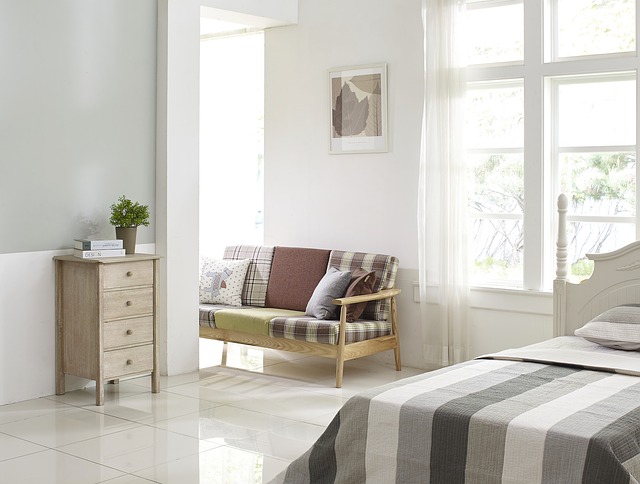
Every year my friend Becky and I head off on a travel adventure together – it’s become a bit of a tradition, and something we always look forward to. Past destinations have included Athens, Budapest, Morocco, Istanbul, Argentina and Brazil, but this time around we decided to avoid the current hassles around international travel and explore a part of the UK that neither of us had ever visited before: Northumberland.
Set in the very north of England, on the border with Scotland, Northumberland is the least densely populated county in the country. It’s wild, remote and beautiful in a moody, elemental kind of way – a county of sweeping moorland, haunting castles, vast horizons, Roman ruins and inky night skies, with an inland national park and a pristine coastline. A week there turned out to be just what I needed, and I soon felt more relaxed than I had in ages. No WiFi, no emails and no work… just lots of fresh air, long walks, lazy evenings, and the chance to catch up with a friend who I hadn’t seen for a while. It really was the perfect antidote to the past 18 months.
Our base was Layside – a little B&B hidden among fields and woodland on the southern edge of the national park. The three simple but comfortable guest rooms sit in a contemporary cabin-style building, and each has floor-to-ceiling windows looking out over the countryside. Delicious home-cooked breakfasts are delivered to your door each morning, and I loved sitting in bed with coffee watching birds flit around the trees outside. On a couple of days, we were even treated to visits from a family of grouse. You can also book evening meals (tasty comfort food like chicken stew and cottage pie), which are prepared by friendly owner Kevin and again ferried to your room. The whole place is incredibly peaceful, and it was a joy to swap the constant buzz of city traffic for birdsong and occasional bleating from the nearby sheep.
I’ve listed my top tips for Northumberland below, but first a quick word about practicalities. If you’re travelling from the south, it’s worth taking the train to Newcastle and hiring a car from there to avoid a very long drive up; the county is also easily accessible via Newcastle airport, or even Edinburgh airport to the north. We stayed at Layside only, but if you want to explore the national park and the coast I’d suggest splitting your time between different accommodation options, as it takes well over an hour to get between the two.







Hadrian’s Wall & Sycamore Gap
Built in 122 AD on the orders of Emperor Hadrian, Hadrian’s Wall guarded the wild northern frontier of Roman Britannia from unconquered Caledonia. It originally stretched 73 miles from coast to coast and much of it is still intact, with the remaining sections now a UNESCO World Heritage Site. One of the longest and most beautiful lies within Northumberland (contrary to popular belief, it’s never marked the English-Scottish border), and it makes for a spectacular walk as it rises and plunges through the landscape.
We started at The Sill, Northumberland National Park’s contemporary visitor centre with a handy cafe for lunch, and followed the wall-side path for a few miles, clambering up and down steep slopes as it crested a series of ridges. Eventually we came to the ruins of a Roman milecastle and next to it, Sycamore Gap – a lone tree rising from a dramatic dip, and apparently one of the most photographed locations in the county (I’ve since found out it was also used to film a scene in Robin Hood: Prince of Thieves, which explains why we kept seeing signed photos of Kevin Costner in local pubs!). From there, we dropped down onto a lower path for a gentler but no less impressive meander back to where we began.




Vindolanda Roman fort
The Northumberland countryside is scattered with Roman ruins, and Layside is perfectly positioned for exploring them. We spent a fascinating morning at Vindolanda – a fort and village that was occupied from 85 to 370 AD and that’s still being excavated today. The vast site encompasses the remnants of shops, barracks, temples, bath houses and more, and excellent guided tours explain what you’re looking at. There’s also a brilliant museum displaying artefacts uncovered during the digs, including cooking pots, military equipment, jewellery, children’s toys and leather shoes. Many of them are spookily familiar and wouldn’t look out of place today – especially a series of hand-written tablets, preserved for millennia in oxygen-free deposits, which cover everything from birthday-party invitations to missing store-box keys.
If you have time, other Roman sites worth visiting include Housesteads, Chesters and the Temple of Mithras.

Coastal castles
Northumberland’s coast is strung with wide sandy beaches and windswept dunes, all of them pristine and most of them largely empty. Many are also backed by towering castles – so many, in fact, that there’s a signposted driving route guiding you from one to the next. Bamburgh is perhaps the best known and is one of the largest inhabited (and also reputedly one of the most haunted!) castles in England, but my favourite was Dunstanburgh. Its crumbling towers occupy a lonely, wave-lashed crag that’s only accessible via a 1.5-mile path from the village of Craster, and you’re likely to have them to yourself. It’s a melancholy yet unforgettably beautiful spot, with the ghostly cries of seagulls only adding to the atmosphere.






Holy Island
The Holy Island of Lindisfarne, to give it its full name, lies a few miles off the coast and is shrouded in drama and mystery. The site of a monastery founded by Irish monks in 635 AD, it was used as a base for converting northern England to Christianity and later went on to witness Viking raids, shipwrecks and a short-lived Jacobite uprising. Even the drive there feels like an adventure, as it’s reached via a causeway that gets cut off twice a day by the sea (make sure you check the tide timetable before you cross!).
The island may be tiny, but there’s plenty to see and do: a ruined priory, a coffee roaster, several pubs and paths that take you along the shoreline, past fishing boats, old lime kilns and, if you’re lucky, seals basking on the rocks. The castle is particularly dramatic. Perched on an outcrop, it was built in the 16th century and served as a military fort before being remodelled as a holiday home for Country Life editor Edward Hudson by famous architect Edwin Lutyens in the 1900s. It’s imposing and rather eerie, with rooms dressed as they would have been at various points during its history and spectacular views over the mudflats to the silhouette of Bamburgh looming on the horizon. My favourite part of Lindisfarne, though, was one that’s easy to miss: a tiny walled garden standing alone on a coastal plain, with beds of colourful flowers and scented herbs. It was originally a vegetable patch for the castle’s soldiers but was transformed by Arts & Crafts garden designer and friend of Lutyens Gertrude Jekyll. Now tended by the National Trust, it’s a peaceful and sheltered sanctuary where we happily lingered for a while.









Hareshaw Linn waterfall
Of all the walks we did during our trip, one of the prettiest and most enjoyable took us through dappled woodland to the cascading Hareshaw Linn waterfall. Start at the Northumberland National Park car park in the village of Bellingham and follow the signposted trail, criss-crossing the river via a series of wooden bridges and passing several smaller falls before you reach the main one. Surrounded by overhanging rocks, moss-covered boulders, ferns and tendrils of ivy, it has an enchanting lost-world feel about it and makes a wonderful spot to rest with a flask of coffee before heading back the way you came. The route there and back is about 3 miles in total and not particularly arduous, although watch out for a few slippery stone steps and uneven sections.



Kielder Water & Forest
In the northwestern corner of Northumberland, almost on the border with Scotland, lies Kielder – England’s biggest forest, with the largest man-made lake in Northern Europe at its heart. It’s a fantastic place for outdoor adventures, with mile upon mile of walking and cycling trails as well as paddle-boarding, canoeing, sailing and horse-riding. We stopped at the main visitor centre for a gentle wander along the shore, before driving through the vast swathe of spruce, pine and fir trees to Kielder Castle at the far tip of the reservoir. It almost felt as if we were in some Nordic wilderness rather than the UK, and along the way we spotted red squirrels scuttling along branches and birds of prey soaring overhead.

Stargazing
The lack of light pollution makes Northumberland an unbeatable place to stargaze – in fact it’s home to the largest designated ‘Dark Sky Park’ in the UK, and the Northern Lights even put in an appearance every now and then. There are observatories at Kielder and Battlesteads, plus several freely accessible ‘Dark Sky Discovery Sites’, but we headed to the Twice Brewed Inn, just up the road from our B&B, for one of its regular guided stargazing events. It was a little disorganised, but host Will’s enthusiasm was infectious and we learned a lot. We also had fun playing around with the on-site telescopes, and some of the things we saw – Saturn’s rings, Jupiter’s moons, multiple shooting stars, and the Milky Way in such clarity that the sky looked as if it was streaked with shimmering dust – were nothing short of awe-inspiring.
Even if you don’t join an organised event, make sure you take the time to wander outside on a clear night and look up – you won’t be disappointed. And yes, I know the below photo shows the moon rather than stars, but Northumberland also turned out to be an excellent location for lunar photography, which has become a bit of personal creative project of mine over the last few months.

Find out more about visiting Northumberland here.
All photography by Abi Dare
 How to raise and save money when changing your home décor
How to raise and save money when changing your home décor  Interior Design Colour & Pattern Trends
Interior Design Colour & Pattern Trends  Injecting Personality into a New Build Home
Injecting Personality into a New Build Home  OUR DREAM LIVING ROOM MAKEOVER
OUR DREAM LIVING ROOM MAKEOVER  Loup & Co – Socially Conscious 100% Cashmere Throw
Loup & Co – Socially Conscious 100% Cashmere Throw  Why You Need a Clutter-free Home
Why You Need a Clutter-free Home  The 15-Minute Movement Habit -Simple Desk Exercises for Working Bloggers
The 15-Minute Movement Habit -Simple Desk Exercises for Working Bloggers  Learning More About Magic: The Gathering – Kindred Decks
Learning More About Magic: The Gathering – Kindred Decks  Healthy Eating Nutrition Tips for Busy Lifestyles
Healthy Eating Nutrition Tips for Busy Lifestyles  The Most Popular Planes in Magic: The Gathering
The Most Popular Planes in Magic: The Gathering